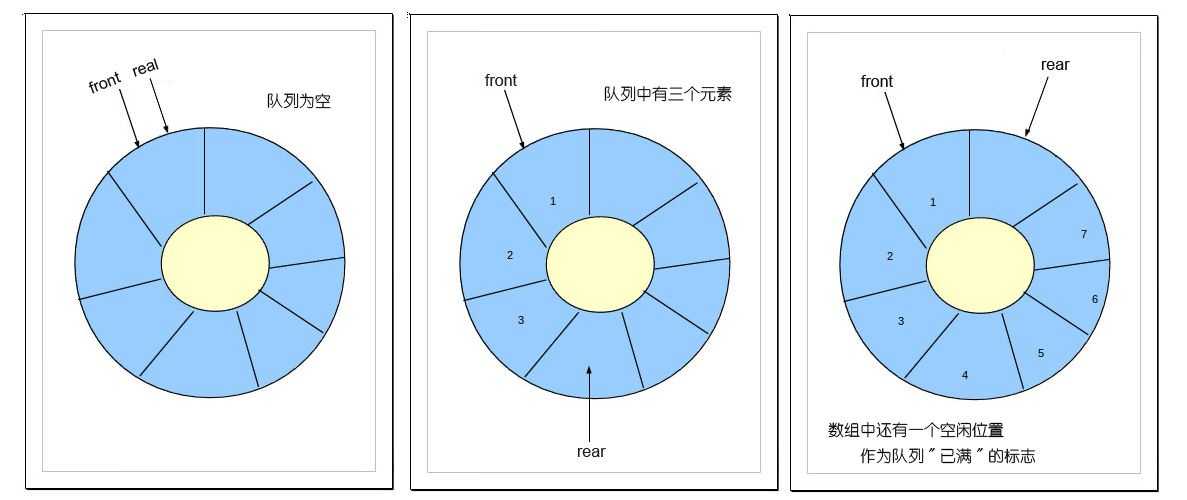[数据结构]手动实现队列
Posted darrenchan
tags:
篇首语:本文由小常识网(cha138.com)小编为大家整理,主要介绍了[数据结构]手动实现队列相关的知识,希望对你有一定的参考价值。
队列有两种实现方式:静态队列(数组)和动态队列(链表)。
这次我就使用数组来实现静态队列了。值得注意的是:往往实现静态队列,我们都是做成循环队列。

package com.darrenchan; public class MyQueue { public int[] arrays; public int front;//指向第一个有效元素 public int rear;//指向最后一个有效元素的下一个元素(无效元素) public MyQueue(int[] arrays, int front, int rear) { this.arrays = arrays; this.front = front; this.rear = rear; } /** * 判断队列是否满了 * @param myQueue * @return */ public static boolean isFull(MyQueue myQueue){ if((myQueue.rear + 1) % myQueue.arrays.length == myQueue.front){ return true; }else{ return false; } } /** * 判断是否为空 * @param myQueue * @return */ public static boolean isEmpty(MyQueue myQueue){ if(myQueue.rear == myQueue.front){ return true; }else{ return false; } } /** * 入队 * @param myQueue * @param value */ public static void enQueue(MyQueue myQueue, int value){ //不是满的队列才入队 if(!isFull(myQueue)){ myQueue.arrays[myQueue.rear] = value; myQueue.rear = (myQueue.rear + 1) % myQueue.arrays.length; } } /** * 遍历 * @param myQueue */ public static void traverse(MyQueue myQueue){ int i = myQueue.front; while(i != myQueue.rear){ System.out.print(myQueue.arrays[i] + " "); i = (i + 1) % myQueue.arrays.length; } System.out.println(); } public static void outQueue(MyQueue myQueue){ if(!isEmpty(myQueue)){ int value = myQueue.arrays[myQueue.front]; System.out.println(value); myQueue.front = (myQueue.front + 1) % myQueue.arrays.length; } } public static void main(String[] args) { MyQueue myQueue = new MyQueue(new int[6], 0, 0); System.out.println(isEmpty(myQueue)); enQueue(myQueue, 1); enQueue(myQueue, 2); enQueue(myQueue, 3); enQueue(myQueue, 4); enQueue(myQueue, 5); System.out.println(isFull(myQueue)); traverse(myQueue); outQueue(myQueue); } }
从上面的设计我们可以发现:rear并不指向最后一个有效的元素,在循环队列中这样设计是非常方便的!因为这样设计可以让我们分得清队头和队尾(不然循环队列不断入队或出队,位置是变化很快的)
由于我们是循环队列,所以front和rear值会经常变动,我们得把front和rear的值限定在一个范围内,不然会超出队列的长度的。
有这么一个算法:rear=(rear+1)%数组长度
- 比如rear的下标是2,数组的长度是6,往后面移一位是3,那么
rear = (rear+1) % 6,结果还是3

以上是关于[数据结构]手动实现队列的主要内容,如果未能解决你的问题,请参考以下文章